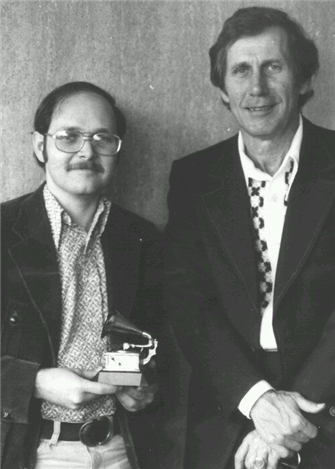Guitar by Randy Buckner
John Knowles: Part Two - Things Learned
Saturday, September 7, 2019 by Randy Buckner | Method Books
Nashville
After working on the project for about 10 weeks, Knowles - with wife, Becky, and son, Jay, - drove to Nashville. It was time to edit the transcriptions with Chet Atkins. During their meeting, Knowles learned many details about Atkins' technique.
The Meeting
As part of the editing process, Knowles learned the nine songs to play for Atkins. As Knowles played each tune, Atkins would occasionally stop him and say, "What are you doing there? I don't think I would do that."
Atkins then listened to the recording of the song, to remember what he had done in the studio. Knowles said, "Chet didn't ever play [a song] exactly like Chet [recorded] it."
Knowles originally thought Atkins' recordings were polished, practiced, and perfected before the recording light went on in the studio. Knowles learned Atkins would "rough out" a song, and record several versions while it was still in the thought process.
This led Knowles to theorize there were probably three or four takes of the songs, which were different from what's in the book. As Knowles said, "Pretty stunning isn't it?"
Asking Questions
Working with Atkins taught Knowles "to make as many guesses that might be right as I could - before asking the question - so I could hear the answer quickly." This also kept Knowles from wasting Atkins' time.
Knowles advises anyone who has access to a player to be as prepared as possible before they ask a question. The answer will then be heard when it comes time.
Knowles explained, "Don't ask questions you're not ready to hear the answer to. You won't get anything out of it except a photo for Facebook."
Technique
After Knowles spent time with Atkins, he learned there was a real depth to Atkins as a musician. It's a depth that's not apparent until you try to play like Atkins, and realize it's more difficult than he made it sound.
As a teen, Knowles developed theories about Atkins' technique, which were confirmed when they worked together.
Knowles learned to play by ear, so he closed his eyes and imagined what Atkins looked like as he played the guitar. Where he positioned his right hand, how his left hand was able to move so effortlessly, and so on.
Knowles was amazed at how close he had come to approximating Atkins' right hand position.
As for the left hand, Knowles spent a significant amount of time - at age 18 - "trying to figure out how to make my left hand float from one thing to another without getting too far from the fingerboard." Watching Atkins' left hand, Knowles thought, "That's it! That's what I was trying to do!"
A Teaching Text
During the project, Knowles learned how to write a text which would be helpful to a student. He realized assumptions could lead to things being left out, and a reader who still had questions.
Knowles said "the whole thing of putting [myself] in the reader's shoes is something I really learned a big dose of, and never let go of."
Randy Buckner.
Hoover Music Co.
Springfield, Mo.
www.bucknerguitar.us


